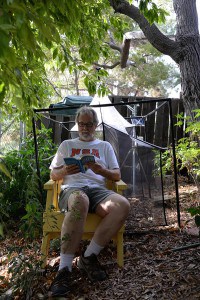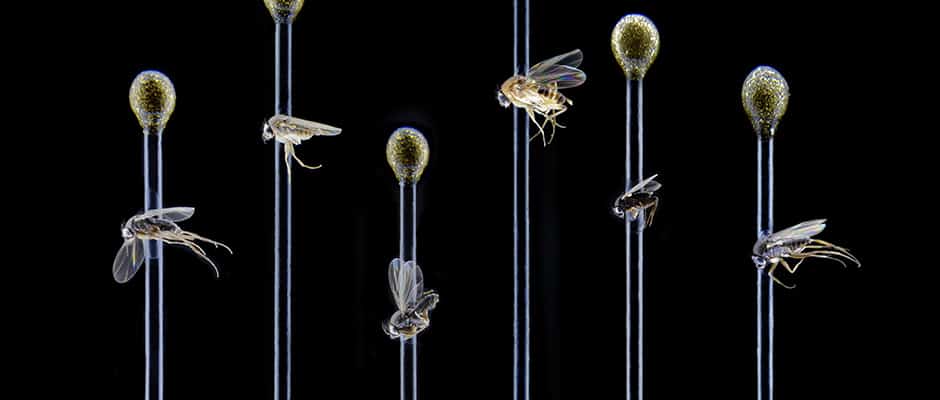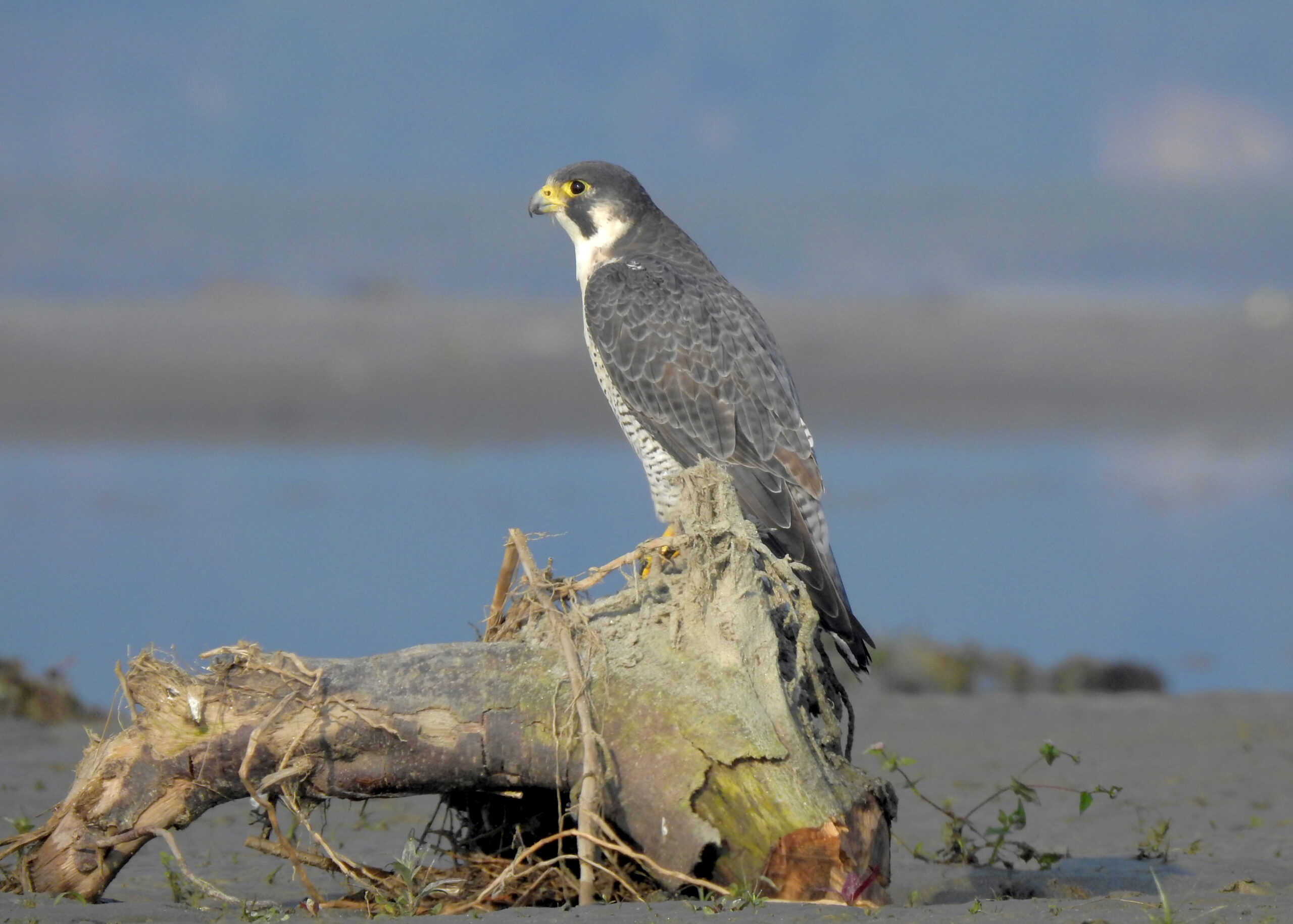Share this article
Entomologists Discover 30 New Species in LA Backyards
The discovery of species unknown to science usually comes with stories of expeditions into remote cloud forests, underwater caves or deep oceanic trenches.
But a new study conducted by the Natural History Museum of Los Angeles County shows that you may only have to go as far as your backyard to discover a wealth of new species.
“We thought this was pretty remarkable,” said Brian Brown the curator of entomology of the museum and coauthor of the study coming out next week in the journal Zootaxa that found 30 new species in the Megaselia genus — a family of small flies that measure no more than a fraction of an inch. “These small flies are poorly known just about everywhere.”

Glen Creason relaxes with an insect field guide in front of the insect trap and weather station that he hosts at his home for the Natural History Museum of Los Angeles County’s BioSCAN project. The project is being helped by 30 citizen scientists who allowed museum researchers to set up these stations in their backyards.
Image credit: Phyllis Sun
Brown is the principal investigator of Biodiversity Science: City and Nature (BioSCAN) — an ongoing three-year project currently in its second year that harnesses the power of citizen scientists across Los Angeles to better understand how urbanization affects the biodiversity of small insects.
As part of the project, researchers and students helped to watch over 30 tents with fly traps put up in the backyards of volunteers across the city in areas that differed in terms of density. Brown and others on the project sorted the roughly 10,000 specimens pulled from traps and examined them under microscopes.
The insects varied greatly among different parts of the city, and while the researchers thought that the traps near open spaces or parks would yield better diversity, they were surprised to find that dense metropolitan areas still yielded a wide variety of bugs. Brown said that they are still trying to understand the reasons why, but it could have to do with humidity levels, or it could have to do with the kind of plants people grow in their gardens.
In one case, the kind of insects discovered — coffin flies (Conicera tibialis) — suggested signs of something rotten underfoot. These small flies specialize in buried cadavers, and after researchers inquired with the volunteer at that backyard site they found that he had buried old pets in the yard after they died from a disease.
“We can find out what people are doing to some extent,” Brown said.
Aside from the 30 unknown species, Brown said that researchers discovered a number of flies that were only previously known to live in Africa or other places. But he said it’s impossible to know yet whether these are invasive species or whether they naturally occur in a number of locations.
“Nobody’s looking at these smaller species that probably make up the majority of what’s being introduced,” Brown said. “They are basically silent because they don’t cause gross agricultural or medical damage to our society.”
Some of the researchers discussing the BioSCAN project. Video credit: The Next Gen Scientists.
It’s also difficult at this point to know about the flies’ ecologies. “Trying to find out what a two millimeter fly does is [like looking for] a needle in the haystack,” he said, adding that many will make a living by preying only on a certain larvae. “A lot of these things have super specific lifestyles.”
The team allowed the families who lent a section of their yards for the three-year experiment to name the new species. Many chose to name it after their family surnames, while others chose their neighborhood or children’s’ names. “They’re doing a lot for us,” Brown said.
One of the citizen scientist families, the Johnson family, describes how they helped the project and found a new species. Video credit: The Next Gen Scientists.
One of the flies was found in the museum’s own backyard, and was named after the Sever family, who Brown said had helped support the project.
The study, which Brown said is possibly the world’s largest urban biodiversity inventory project, has drawn attention from some of his colleagues at the museum, who want to repeat the experiment with birds, reptiles, amphibians and other biological species.
Check out a blog from one of the researchers.
Header Image:
Six of the new fly species discovered in Los Angeles by the BioSCAN project of the Natural History of Los Angeles County. The flies were named after citizen science volunteer families who hosted specimen sites. From left to right, these specimens are: Megaselia mikejohnsoni, M. creasoni, M. francoae, M. donahuei, M. lombardorum, and M. rodriguezorum.
Image credit: Kelsey Bailey








